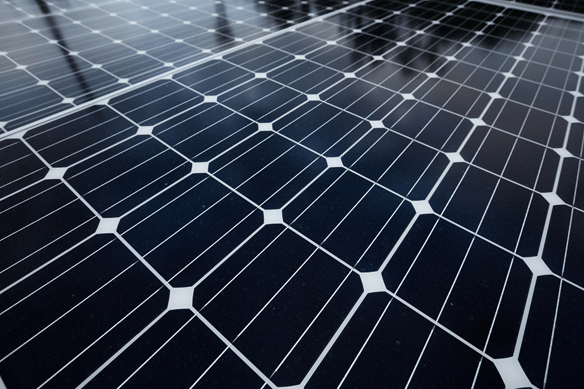
With the uncertainty of the future of energy costs and the push toward sustainability, many entities, both businesses and individuals, are installing photovoltaic or solar generation systems. Using energy generated by the sun, these systems can help to offset operating expenses and decrease carbon footprint. There are other drivers to installing a solar generation system which include sustainability and resiliency. Regardless of the driver of energy goals, the same question comes up for any solar generation installation: what can be done with excess solar generation that cannot be used real time?
In order to appropriately design a solar array, the place to start is with what is known: the site load, or energy requirements. A solar array can be sized to meet the overall facility energy usage day and night, all year round. The issue with this strategy on a daily basis is that the energy generated during the day will likely exceed the facility load. On a seasonal basis, the summer generation is going to greatly exceed the winter generation. What can be done with the excess solar that cannot be used real time when it is available? There are a few different options with pros and cons to each.
Several Options for Unused Solar Power
Option 1: Only Draw Solar Power When it is Needed
The first option is to curtail the solar, or stop drawing power from the panels any time that there is not an electrical load to consume it. This requires metering and inverters with power control functionality built in to restrict the generation. Although this is a viable option technically, it will rarely provide an overall financial benefit, especially in a facility that has a consistent overnight load or that has a significantly reduced load on the weekends.
Option 2: Send Excess Solar Power Back to the Grid
The second option is to push the extra power back to the grid to help support the energy load at other facilities that are on the same distribution lines. From a technical standpoint, this is the easiest and most straightforward option, with no metering or curtailment controls required. Any time that the panels have sun shining on them, the power electronics will draw the maximum amount of generation from them, convert it to alternating current (AC) and serve all loads connected to the inverter. This option requires permission from the utility to push power to the grid. They need to make sure that the distribution system in the area will not be at risk of overload with additional generation sources connected, which is very dependent on the power capacity of the resource.
Net Energy Metering (NEM) Agreement (Get Paid For Excess Solar Power)
When available, power push back could also have a much quicker system payback, but it is very dependent on the policies of the utility. The best case for the consumer is if the utility has a net energy metering (NEM) agreement available. This type of agreement will pay the owner of the solar resource for the energy that is generated and pushed back to the utility at the same rate that they purchase energy for. In essence, if the solar array generates the exact same amount of energy as the facility consumes, the energy portion of the utility bill will be eliminated. With more and more renewable resources coming online, NEM agreements are becoming less common. Most interconnection agreements will pay a lower rate for excess energy produced than what is charged for energy consumed.
Option 3: Store Extra Solar Power in Batteries
Another option for excess solar power generation is to capture and store the extra energy, and there are many ways to do that. The most straightforward is to charge batteries in a battery energy storage system. This option allows the most flexibility for the solar resource owner and can also have the biggest impact on the site financially. The storage can be used to shift the excess energy that is produced during the day to overnight hours when the sun isn’t shining. Stored energy can also be used for demand charge mitigation, frequency or voltage support, PV smoothing, time of use shifting or resiliency. Each of these applications individually, or different combinations used in tandem, have the potential of financial benefits depending on the site-specific situations and utility tariffs. Stored energy could also be used to generate heat that can be used for process load at a later time.
Choosing What to do With Unused Solar Power
An energy storage option is significantly more complex than the first two options. It is more costly on the front end, but when designed correctly, storage has the potential for the biggest impact to meet your defined energy goals. The energy experts at EnTech Solutions look forward to working with you on a full solution, from initial assessment to installation, implementation and optimization, to meet all of your energy needs today and in the future. Contact us today to learn more.
Explore our solar storage projects.
Thank you for checking out the EnTech Solutions blog. To stay up to date with technologies, developments and trends about clean energy, please subscribe.








